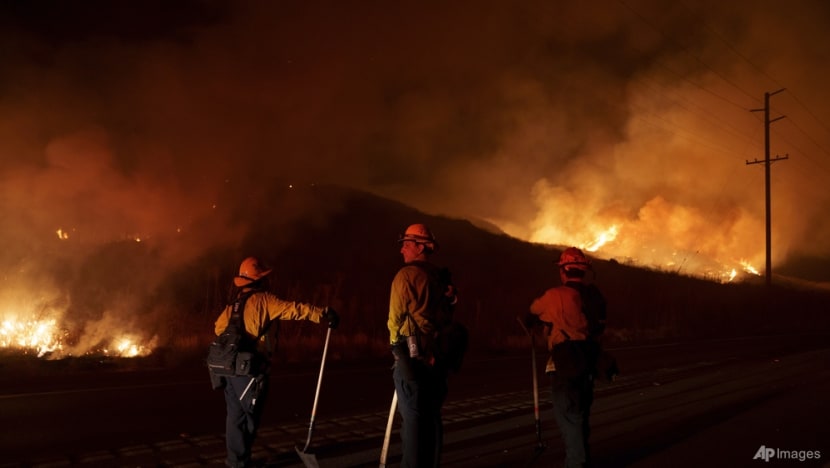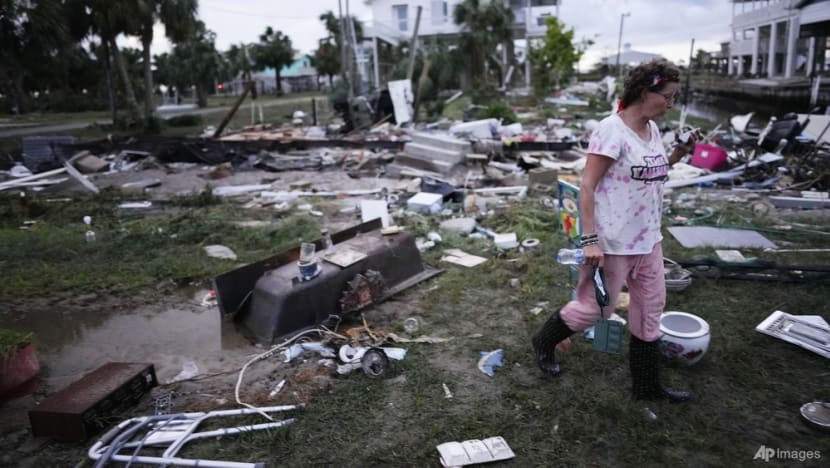Warnings on extreme weather events need to be much earlier to save more lives, says analyst
According to a report by UN agency World Meteorological Organizationan, an estimated 489,000 people died due to heat per year from 2000 to 2019, with 45 per cent of these deaths in Asia.


This audio is generated by an AI tool.
Early warnings on extreme weather events such as heat waves have to come with a longer lead time, an analyst said on Friday (Nov 3), a day after the United Nations released a report sounding the alarm that climate change threatens to reverse decades of progress towards better health.
Countries have generally been reactive, instead of proactive, when it comes to dealing with climate-driven weather events, said Professor Amir Sapkota from the School of Public Health at the University of Maryland.
“Rather than a few days, we need to know weeks, even months ahead of time, so that we can prepare … and respond to them,” the chair of epidemiology and biostatistics told CNA’s Asia First.
A dedicated section of the annual State of Climate Services report by UN agency World Meteorological Organization detailed the issues surrounding extreme heat, which causes the greatest mortality of all extreme weather.
According to the report, an estimated 489,000 people died due to heat per year from 2000 to 2019, with 45 per cent of these deaths in Asia. However the impact of heat is underestimated as mortality related to it could be 30 times higher than what is currently recorded.
The study also painted a bleak picture for the future.
The number of medium- or large-scale disaster events is projected to reach 560 a year – or 1.5 each day – by 2030.
"We don't have a choice, we must adapt to this increasing frequency of extreme weather events. So that means we need to get much, much better in terms of anticipating these threats ahead of time and preparing for them,” said Prof Sapkota.
"That is the critical thing that's missing, and we need a lot of work moving ahead in that direction."
Countries with limited early warning coverage have disaster mortality that is eight times higher than countries with substantial to comprehensive coverage, warned the report.
NEW IDEAS FOR MONITORING
The study, which included input from more than 30 collaborating partners, features international case studies that show how integrated climate and health action makes a real difference in people’s daily lives.
This includes pollen monitoring to help allergy sufferers.
“We can predict when the peak pollen concentration is going to be as the pollen season starts. So perhaps, then you can send out a warning, particularly if you have some asthmatic children in your home, minimising their activities during the peak,” Prof Sapkota said.
He added that given that ozone worsens asthma, there could be a warning on high ozone concentrations.
Still, he emphasised that more work needs to be done to provide authorities a longer lead time for response.
IMPACT OF EXTREME WEATHER ON HEALTH
Prof Sapkota said that climate change is killing people and making communities sick not just directly, but indirectly as well.
Indirect effects include diarrheal diseases, and an increase in the incidence of mosquito-borne diseases like dengue fever and malaria, he noted.
Also speaking about climate change’s indirect effects, Professor of Environment, Climate and Global Health at University of Melbourne Kathryn Bowen gave the example of a community's crop being wiped out because of a hurricane or cyclone.
"This has flow-on impacts in terms of those households’ livelihoods and whether they can then afford health care,” she said.
“It also (affects) mental health in terms of worrying about the impacts of these events, and what might be coming up as well,” she told CNA938’s Asia First on Friday.

THE MOST VULNERABLE
The most vulnerable to extreme weather events are those who lack the capacity to adapt to these threats, Prof Sapkota noted.
Citing the example of heat waves, the first ones to die would be those who are out on the streets and lack access to a cool environment, he said.
Those with chronic diseases such as asthma, cardiovascular diseases, diabetes and obesity are also vulnerable, he added.
”Those are the populations that we should be focusing on,” he said.
Prof Bowen noted that food and water security for many countries in the Indo-Pacific region are already inadequate, and that climate change amplifies the challenges that many of these communities face.
“We need to really be supporting countries that are also not able to necessarily have the economic power behind them to develop … solutions. So it really is a collaboration and we need to be learning what works in which context," she said.















